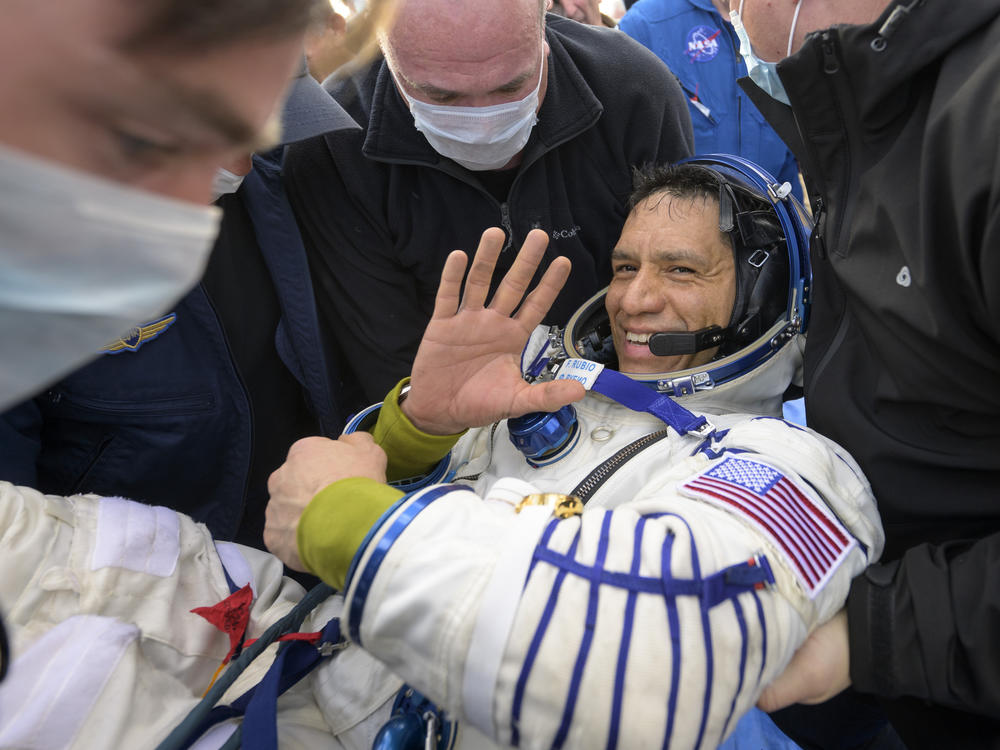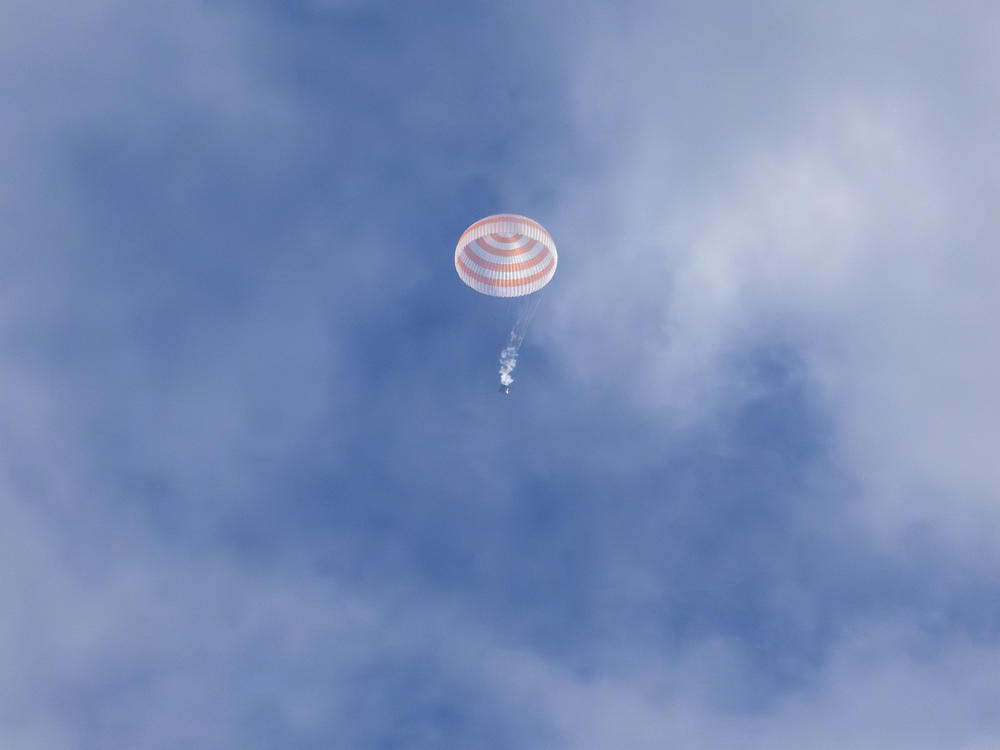Section Branding
Header Content
His spacecraft sprung a leak. Then this NASA astronaut accidentally broke a record
Primary Content
NASA astronaut Frank Rubio holds the record for the longest U.S. space flight, but he wasn't trying to earn that title.
In September 2022, Rubio was deployed to the International Space Station along with two Russian cosmonauts. It was supposed to be a six month mission, but their original ride sprung a coolant leak while docked to the station. That 180-day mission turned into a 371-day stay.
Rubio returned to earth in September 2023. He joined All Things Considered host Ari Shapiro to reflect on the unexpectedly long journey.
This interview has been lightly edited for length and clarity.
Interview highlights
Ari Shapiro: When you go to space, there is a whole team making sure everything goes right, checks and re-checks and backup plans. But still, things happen. So how did you feel when you found out that you would be in space six months longer than you had expected?
Frank Rubio: It was initially kind of challenging. But again, we were very, very assured of the fact that the team was going to take care of us. And ultimately, they came to the conclusion that the safest path forward was to send a new spacecraft up.
It was challenging because you knew you'd be away from your family longer than anticipated, but you also knew that they were making the right decision for our safety. And so that obviously made it a little bit more palatable. And bottom line is we're all mission focused. And we knew that's what needed to happen to make the mission happen. And so once you got over the initial shock and surprise, you just kind of focused on making the best of it and making sure that the mission was accomplished.
Shapiro: For most of us, a mechanical challenge means we have to, I don't know, stay home from work for the plumber for a day. This feels like a really big deal. In that moment when you found out what was happening, were you scared? Like, can you take us into how it felt on that day?
Rubio: Well, so first of all, there was no imminent sense of danger because you do take that spacecraft up to the space station. But once you dock, essentially the space station itself becomes your safety vehicle. But you do always have to have a way to get home in case something goes wrong. And so your spacecraft, whether it be a Soyuz or a Dragon, essentially is parked on station so that if anything were to happen, you can quickly get in and get yourself safely back home.
And so for the month or two that the damaged Soyuz was up there, we knew that we were essentially without a completely safe vehicle. But at the same time, the station has been operating for 23 years, and a safety vehicle's never been necessary in the past. And so even though you had that in the back of your mind, there was no imminent sense of danger. And ultimately, the fact that the team was able to say, "Hey, we're going to launch an entire new spacecraft to come get you" was a pretty big deal because that's not an inexpensive endeavor.
Want more on aerial methods of transport? Listen to Consider This on Boeing's cozy relationship with the Federal Government.
Shapiro: What did you miss most about life on earth?
Rubio: Well, my family for sure. And then, I love the outdoors. And so that was actually really challenging because the space station is great, but it is very small. And it's a very enclosed space. We say it's about the size of a two- to three-bedroom house, but really it's a two- to three-bedroom house composed entirely of hallways, right?
And so there's no large room that you can go and just enjoy a little bit of space. And our crew quarters, which is really the only privacy you have, is about the size of a small phone booth. And so, yeah, you do have to just be disciplined not to focus on the fact that it's so enclosed.
And then the rest, it's really such a incredibly unique experience that you don't really focus on the fact that you're in outer space, that you're traveling at 17,000 miles per hour, you know, the fact that the walls are less than a half-centimeter thick, all those things. Although if you think about them, they could seem really dangerous, I think we all just accept that that's the place where we're operating and that it's worked well for 23 years.
Shapiro: What was it like coming home?
Rubio: It was fantastic. One of my favorite experiences was just the whole process of de-orbiting and appreciating the engineering and the science that goes into making sure that that happens safely every single time a crew comes home is pretty special, right? It all has to work perfectly right every single time, and it has to this point. And so essentially becoming a meteorite yourself as you're reentering the earth is pretty incredible.
Shapiro: NASA has been studying the effects of long-term spaceflight on humans for a while now, and you now hold the record for the longest spaceflight for any American astronaut. So how do you feel physically and mentally? I mean, you've been back on land for a few months. Are there lingering effects?
Rubio: Fortunately, again, I'm kind of glad that this happened when it did, which means 23 years into the program, because we've kind of figured out how to keep humans healthy up there.
One of the biggest things being resistance exercise, because we found that the biggest effects were really on our musculoskeletal and cardiovascular systems. And so doing strength training and doing cardiovascular training really keeps us in pretty good health. I actually lost less bone density than a lot of the six-month missions used to lose in the past. And that's just because every day you're putting in the work and you're kind of consistently doing that throughout the year.
So I actually felt really, really good when I got home. The only things that kind of hurt were my lower back, and that's a little bit expected just because even though you're strengthening it, it's really not used to keeping your posture every single moment of the day. And then the bottoms of my feet actually hurt quite a bit. And you really can't train that. And the pressure and the sensitivity that comes with standing and walking was a little bit unexpected. But that's all resolved. And yeah, I'd say I'm about 90 to 95% back to perfectly normal.
Copyright 2024 NPR. To see more, visit https://www.npr.org.


